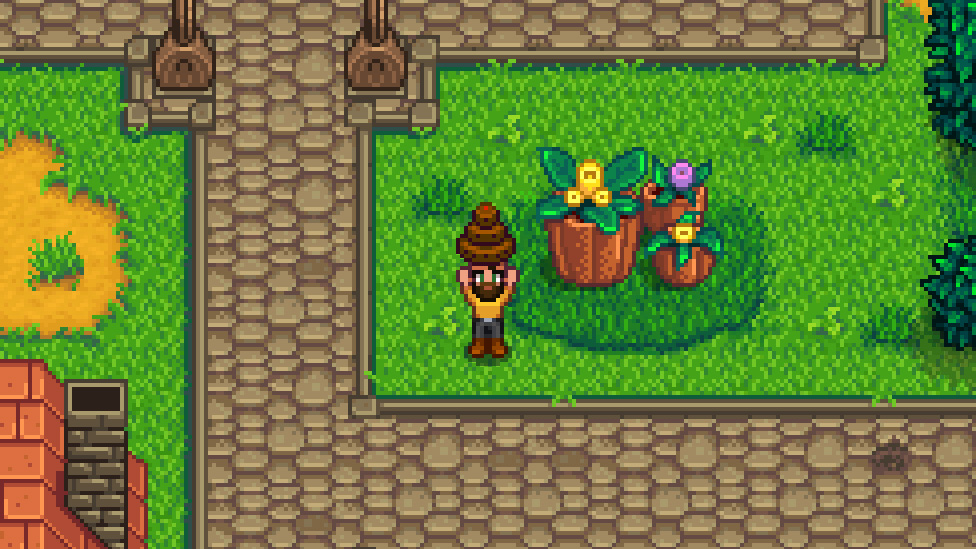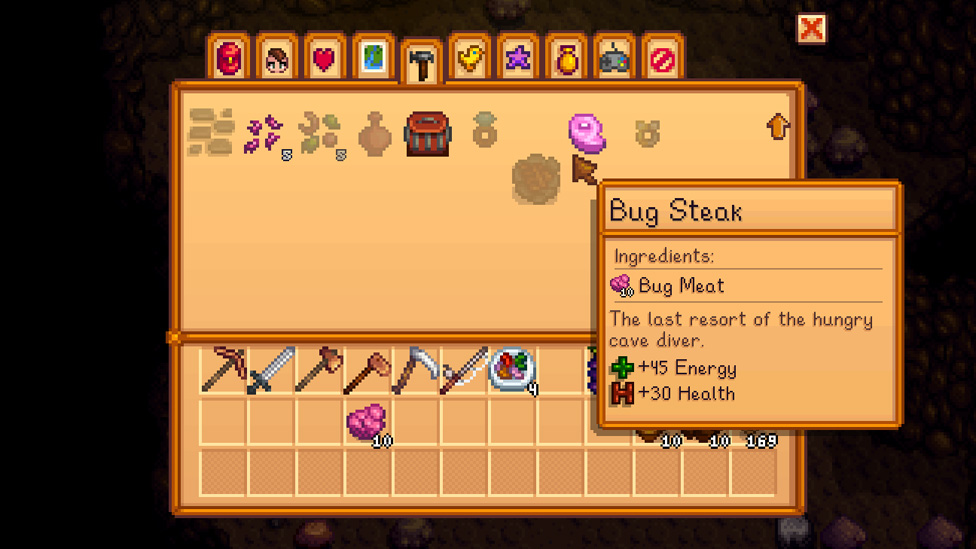How to Cook in Stardew Valley

Make Your Own Stardew Valley Server
The Different Methods of Cooking in Stardew Valley
There are many different methods of cooking in Stardew Valley. And, while it’s not necessarily a requirement to cook food every day to keep your character active, making sure you’re eating often can really help; this can restore a great deal of energy and also provides a range of handy buffs.Crafting Food
One of the earliest ways to cook in Stardew Valley is to craft snacks while on the go. Needless to say, of the many craftable foods, a Field Snack will likely be one of the first you get the chance to make. The recipe for field snacks is learned at Level 1, and they offer 45 energy and 20 HP—a quick and easy energy boost. Similarly, Bug Steaks can be crafted once you reach Combat Level 1, restoring 45 energy and 30 HP.In addition to this, a Life Elixir can be crafted at Combat Level 2, which provides 200 energy and 80 HP; then, once you eventually get to Combat Level 6, you can craft oil of garlic to repel weaker enemies from attacking.
Cooking in a Kitchen or with a Cookout Kit
When we think of Stardew Valley cooking, there’s a good chance you’ll be mainly thinking of cooked meals. These require a kitchen, which you can get by upgrading your house for the first time. Once you have unlocked the kitchen, you will be able to cook a wide range of different recipes. Alternatively, you could use a cookout kit once you reach Foraging Level 3, which allows you to cook anywhere. You can also obtain two cookout kits by completing the Wild Medicine bundle in the Community Center.

How to Cook in Stardew Valley
Once you have either a kitchen or a cookout kit, the next thing you’ll need to try your hand at cooking is recipes. Fortunately, there are many different ways to get these (as we’ll cover shortly).Once you’ve got a recipe that you’d like to try your hand at, you’ll next need to source the ingredients for the recipe. Placing the ingredients in the fridge as you go will directly link them to the stove in your house, making it much easier to prepare dishes; in contrast, if you store ingredients in a chest, you’ll need to manually remove them before cooing.
If you don’t have all of the ingredients needed to make a recipe, the game will flag these in red. Until you find them, you won’t be able to cook the dish; fortunately, there are numerous ways you can obtain new ingredients, such as from Pierre’s if you sold to him earlier in the year or from the Traveling Merchant’s shop.
Of course, it is possible to lose a recipe if your game should crash. In line with this thought, playing with a dedicated 24/7 server might help, such as ScalaCube—a dedicated server hosting platform offering dependable and reliable solutions for Stardew players.
How to Get Recipes in Stardew
There are many ways that you can get new recipes, and fortunately, you always start off with at least one: the recipe for a Fried Egg. If you want to expand your cooking repertoire further, some other options you could try include the following:- Watching TV: The Queen of Sauce cooking programme allows the player to learn a large range of different recipes, which update weekly on a Sunday; a re-run of previous recipes also airs on Wednesdays, just in case you missed a previous episode. Many of these recipes are exclusive to the show, so it’s the only way to learn them.
- Buying Recipes: There are several places you can buy recipes in Stardew Valley, although the Stardrop Saloon is the main place to go. Here, you can learn the recipes for hashbrowns, omelets, pancakes, bread, tortillas, pizza, maki rolls, cookies, and triple shot espressos.
- Befriending Villagers: There are many people in Pelican Town who’ll be willing to share their tried and tested recipes with you for free once you reach a certain level of friendship. You’ll normally receive these in the mail as part of the character’s heart event.
- Skills: As you develop your skills, you’ll also learn new recipes. For example, at Farming Level 3, you’ll be able to make a Farmer’s Lunch. These skill-locked recipes often provide buffs to the specific skill they are tied to, making them incredibly useful recipes to make if you have a certain task at hand.

FAQs
Why is cooking important in Stardew Valley?
Cooking is incredibly important in Stardew Valley for several reasons. For one thing, it allows you to create nutritious dishes that buff your basic traits, such as increased speed or luck. In addition, cooking also allows you to create liked and loved gifts for those in the village, which can be a more cost-effective way to win their support than buying gifts.
How to cook in Stardew Valley?
Cooking in Stardew Valley is relatively simple. Some recipes can be crafted directly from the crafting menu; others can be made at either the kitchen or with a craftable cookout kit.
How can I get new recipes in Stardew Valley?
New recipes can be obtained in several ways. You start the game knowing the recipe for fried eggs; from there, you can buy recipes from the shops, learn them naturally through leveling up, learn them on the bi-weekly cooking show, or receive them from NPCs in Pelican Town.
What is the best cooking recipe in Stardew Valley?
There are many different ways to benefit from cooking. From a profitability perspective, Sashimi can be profitable when using lower-value fish; meanwhile, there are many other recipes that can boost your skills, such as Lobster Bisque, Seamfoam Pudding, Roots Platters, Miner’s Treats, Farmer’s Lunches, and the like.
Final Thoughts
As part of your game in Stardew Valley, cooking can offer a myriad of benefits. As a result, it’s often helpful to know about the different recipes you could try; you might just find that this helps make cooking a lot more straightforward.Make Your Own Stardew Valley Server
Copyright 2019-2025 © ScalaCube - All Rights Reserved.